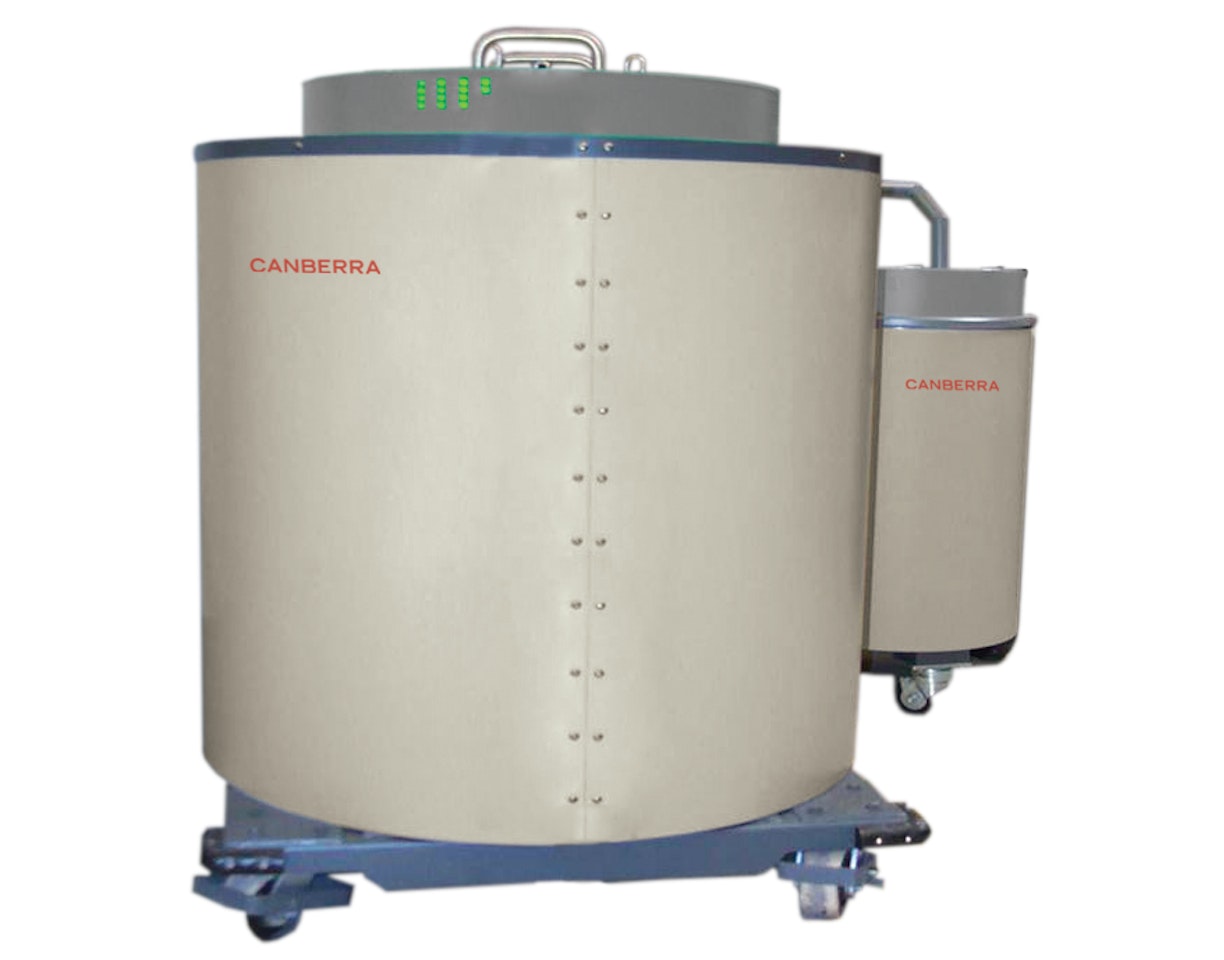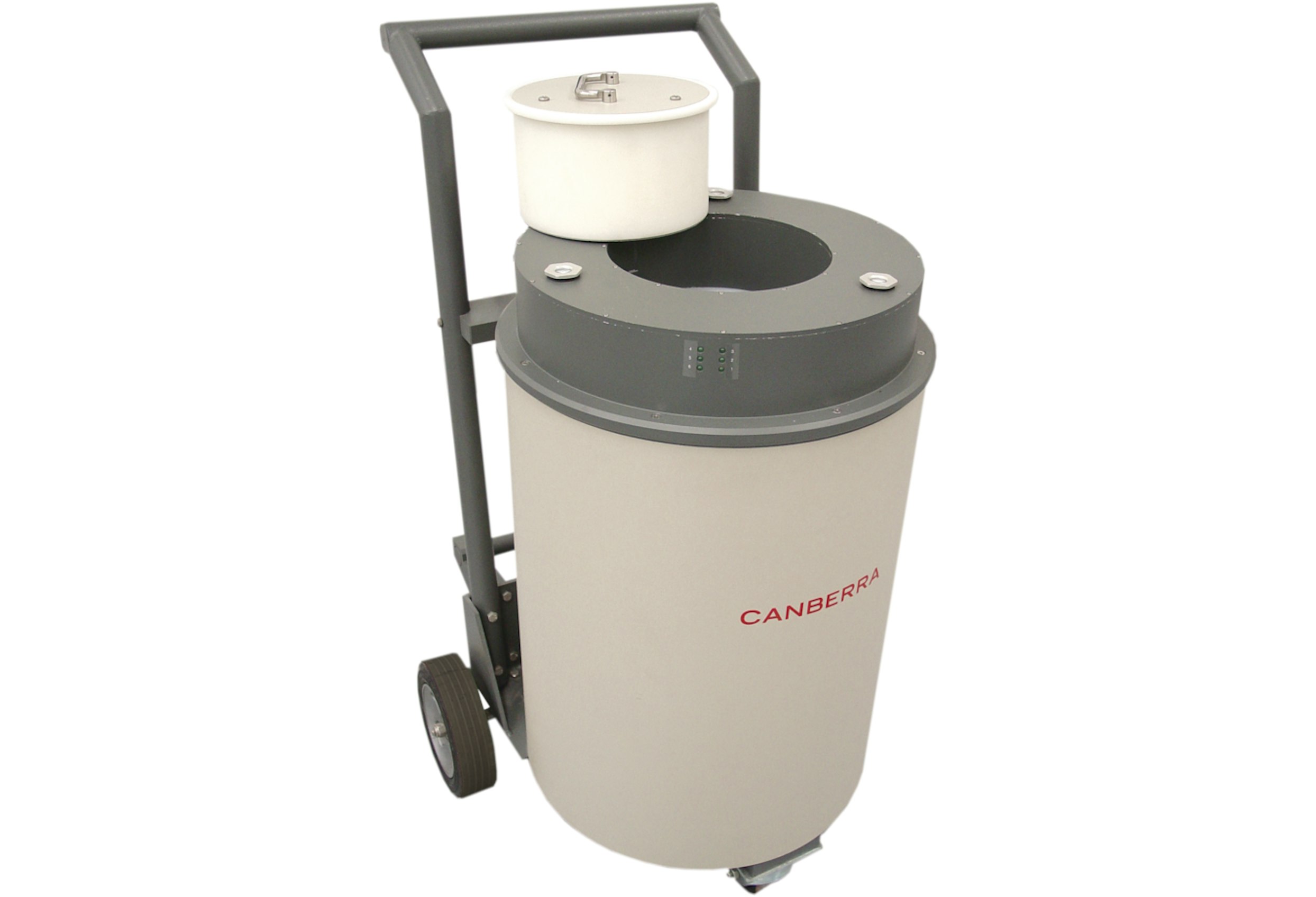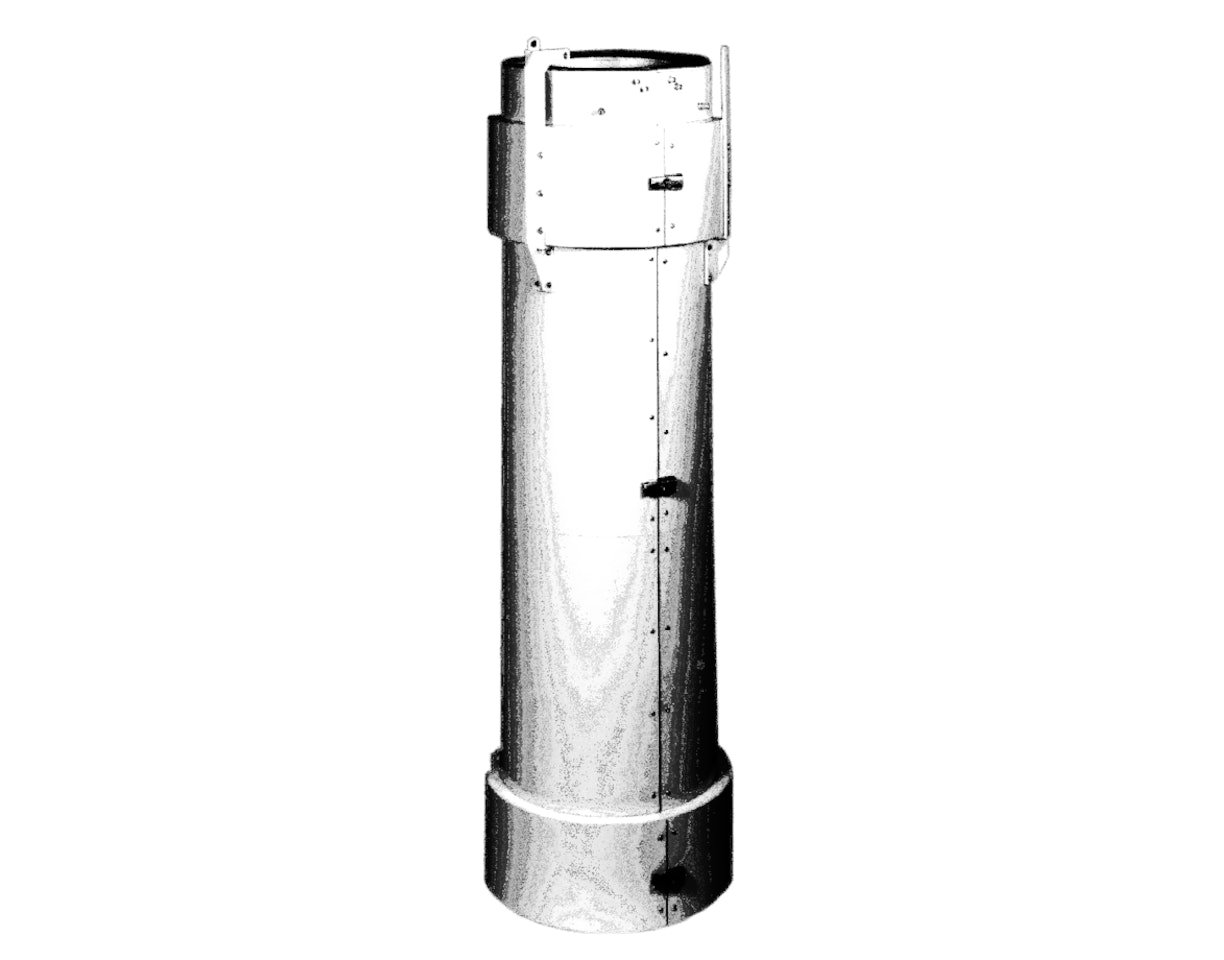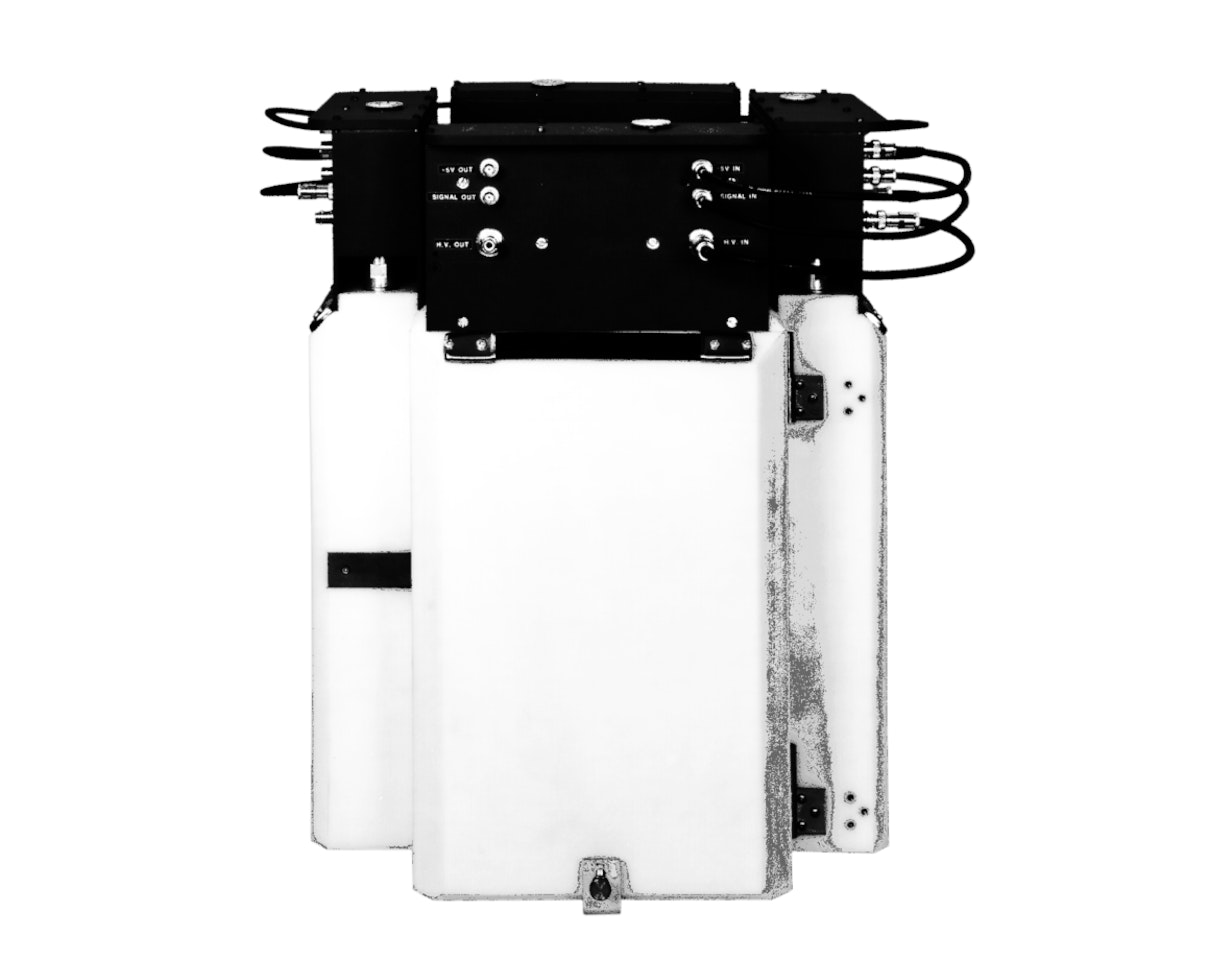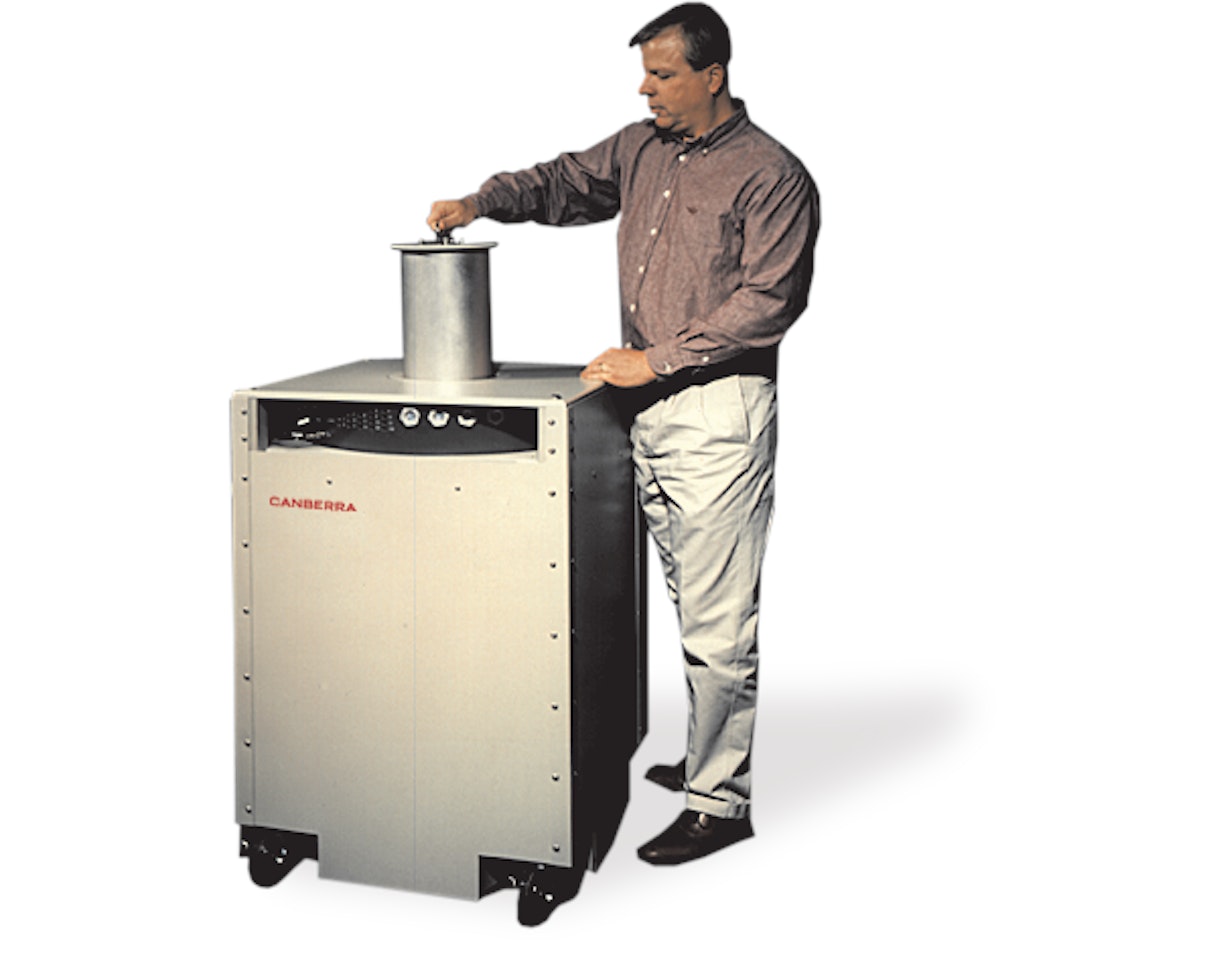Description
Isotopes of uranium (235U and 238U) do not spontaneously fission at a significant rate like the even-numbered isotopes of plutonium. For this reason, uranium assays utilize an external neutron interrogation source to induce fission in the sample. This is referred to as an active assay.
The JCC-51 counter, which is based on a technology transfer from Los Alamos National Laboratory, is used to make active neutron measurements on items such as bulk UO2 samples, high-enrichment uranium metals, UAl alloy scraps, LWR fuel pellets and 238UTh fuel materials. Americium-Lithium (AmLi) neutron sources (one in the top plug and one in the bottom plug) induce fission in the uranium sample and the coincidence neutrons are counted. If the AmLi sources are removed, the counter can be operated in a passive mode to assay plutonium.
Forty-two 3He tubes are embedded in the high-density polyethylene surrounding the sample well. They are arranged in two concentric rings to maximize efficiency. The tubes are divided into six groups of seven, and each group is wired together and connected to one JAB-01 Amplifier/ Discriminator circuit board. The six JAB-01s are mounted inside a sealed junction box, with LED indicators placed externally on the junction box to indicate proper operation of each JAB-01 channel.
Electrical connections between the JCC-51 and the JSR-12™ Neutron Coincidence Analyzer include +5 V and HV. The combination of signals will be combined into a logical OR.
The sample well height can be increased by removing one or both of the polyethylene discs in the top and bottom plugs. Enlarging the sample well will increase the absolute efficiency because the ends of the 3He tubes are not as shielded, but decrease the precision because the random background from the AmLi source is increased.
A cadmium sleeve is wrapped around the outside of the counter to reduce the background and to reduce personnel exposure.
The counter can be operated in two active modes: thermal mode and fast mode. Thermal mode is used for low-enrichment material such as UO2 pellets, U3O8 powder and low content scrap (<50 g 235U), high- enrichment material including 235UTh and 233UTh (HTGR fuels) and samples with large quantities of hydrogenous materials such as scrap with plastic bags, uranyl nitrate (few g/L to few hundred g/L) and plutonium solutions (few g/L to few hundred g/L). The fast mode is used for high-enrichment uranium metal.
For thermal mode, the internal cadmium sleeve and cadmium in the end plugs are removed.
For assay of large samples such as fuel rods or plates, the counter is turned on its side, the end plugs are removed and an MTR Insert (JWI-11) is positioned inside the counter. The cart is used to support the counter in the horizontal position.
The counter sits on a cart that is designed so that one person can move the unit.
Two AmLi neutron sources (JNS-01), JSR-12 Neutron Coincidence Analyzer, a computer and analysis software are required for neutron coincidence counting but are not included with the JCC-51 counter.
